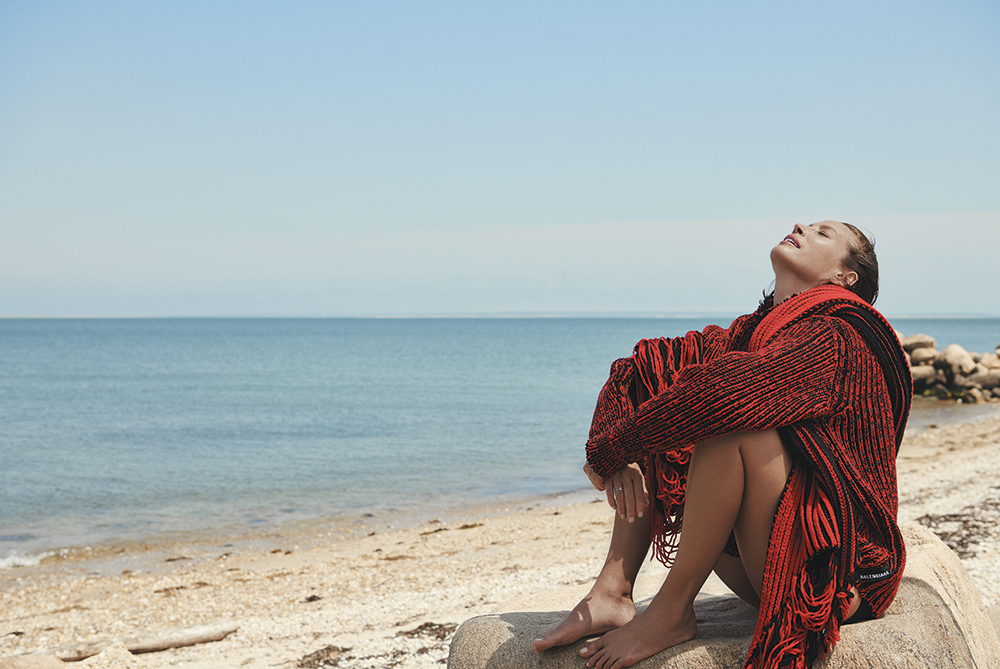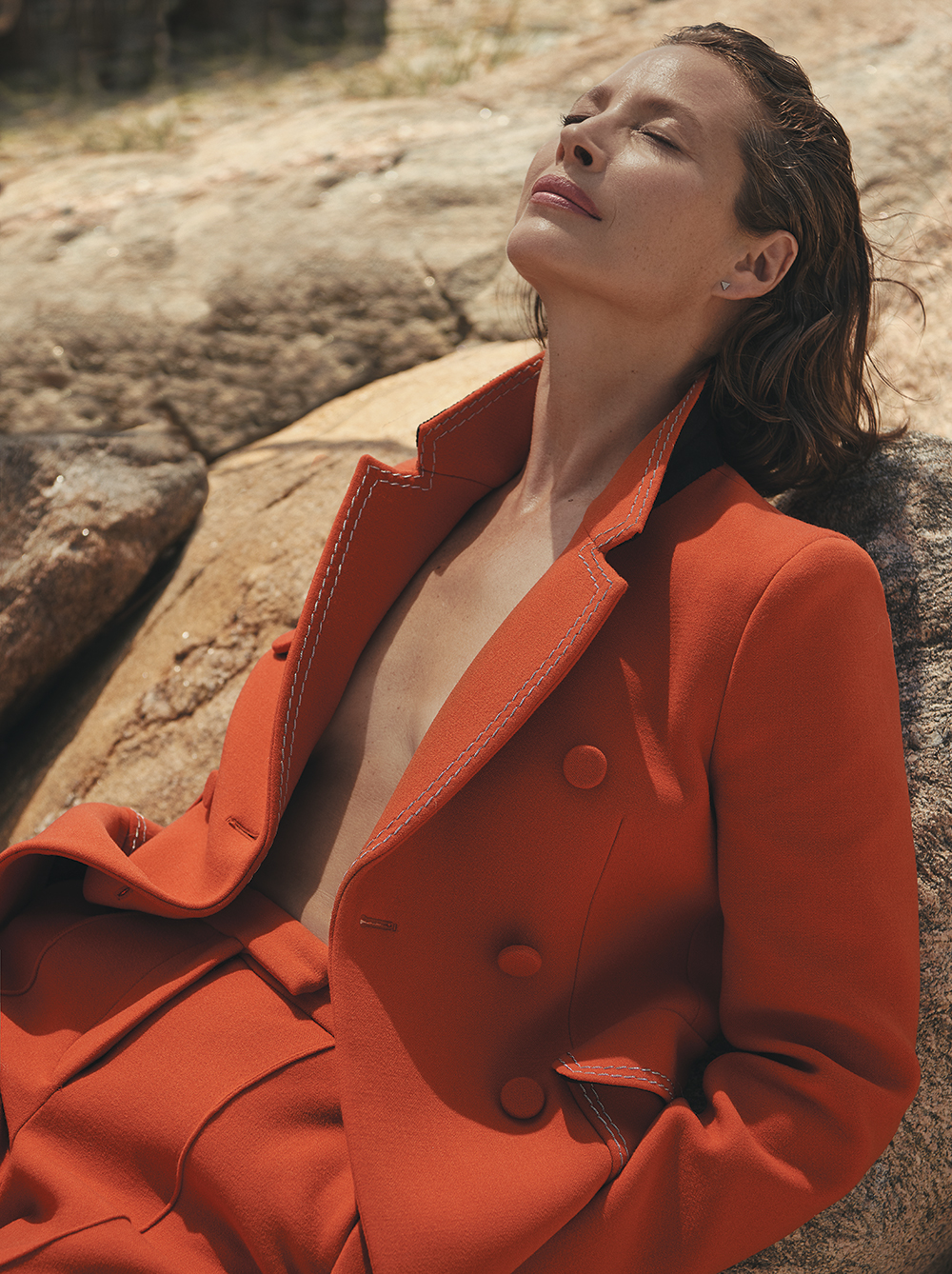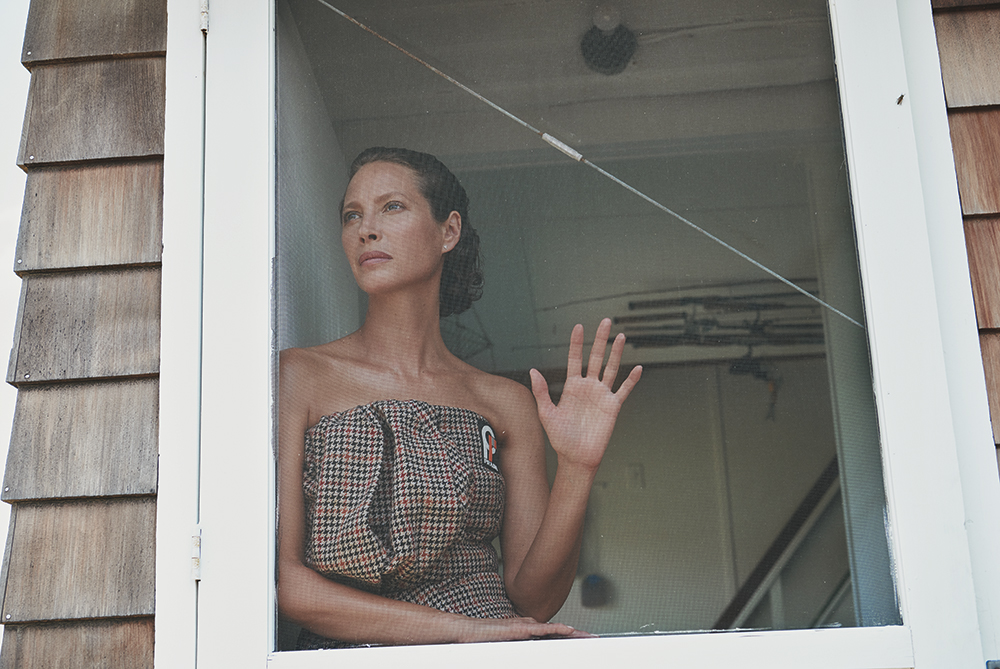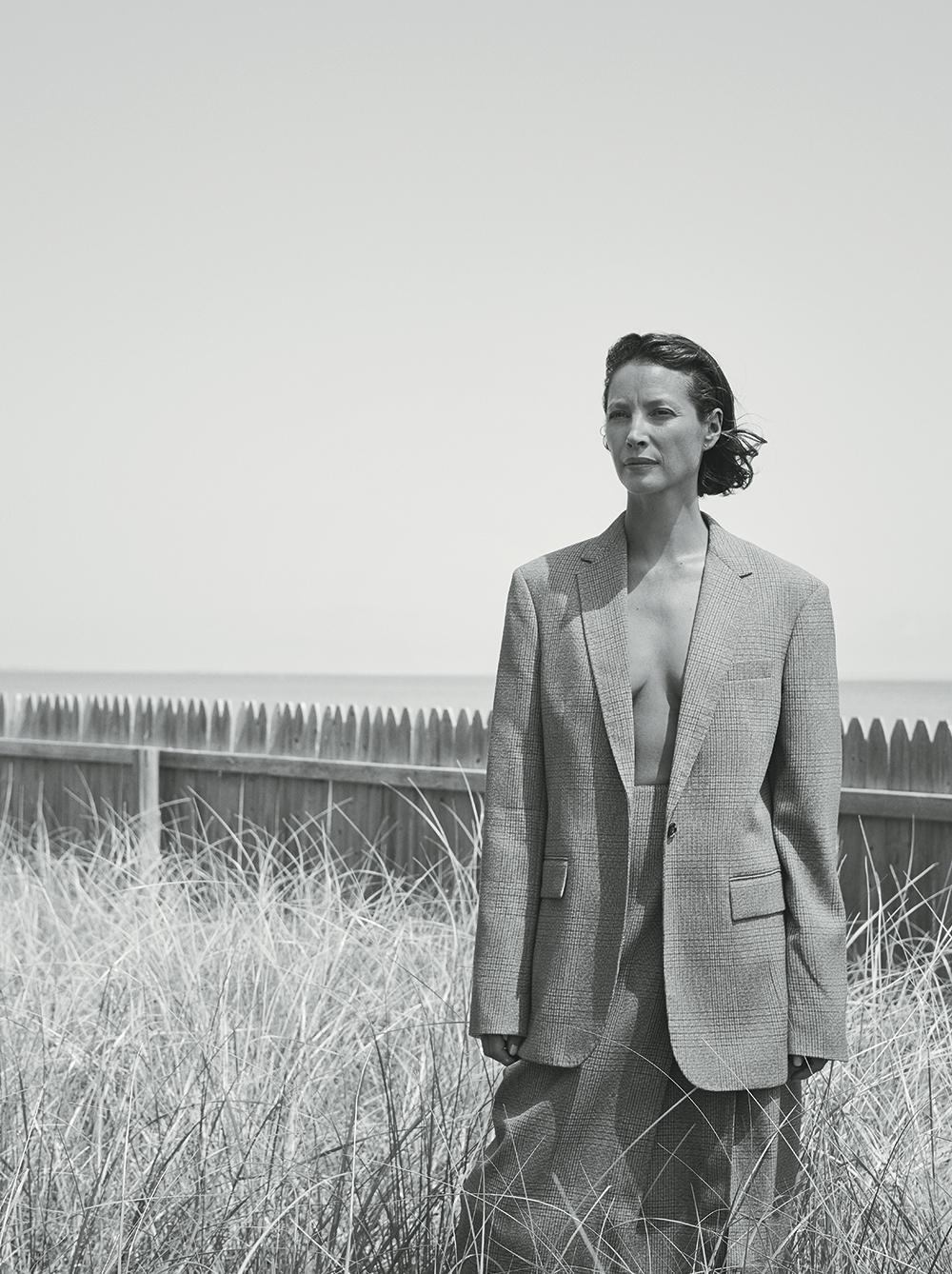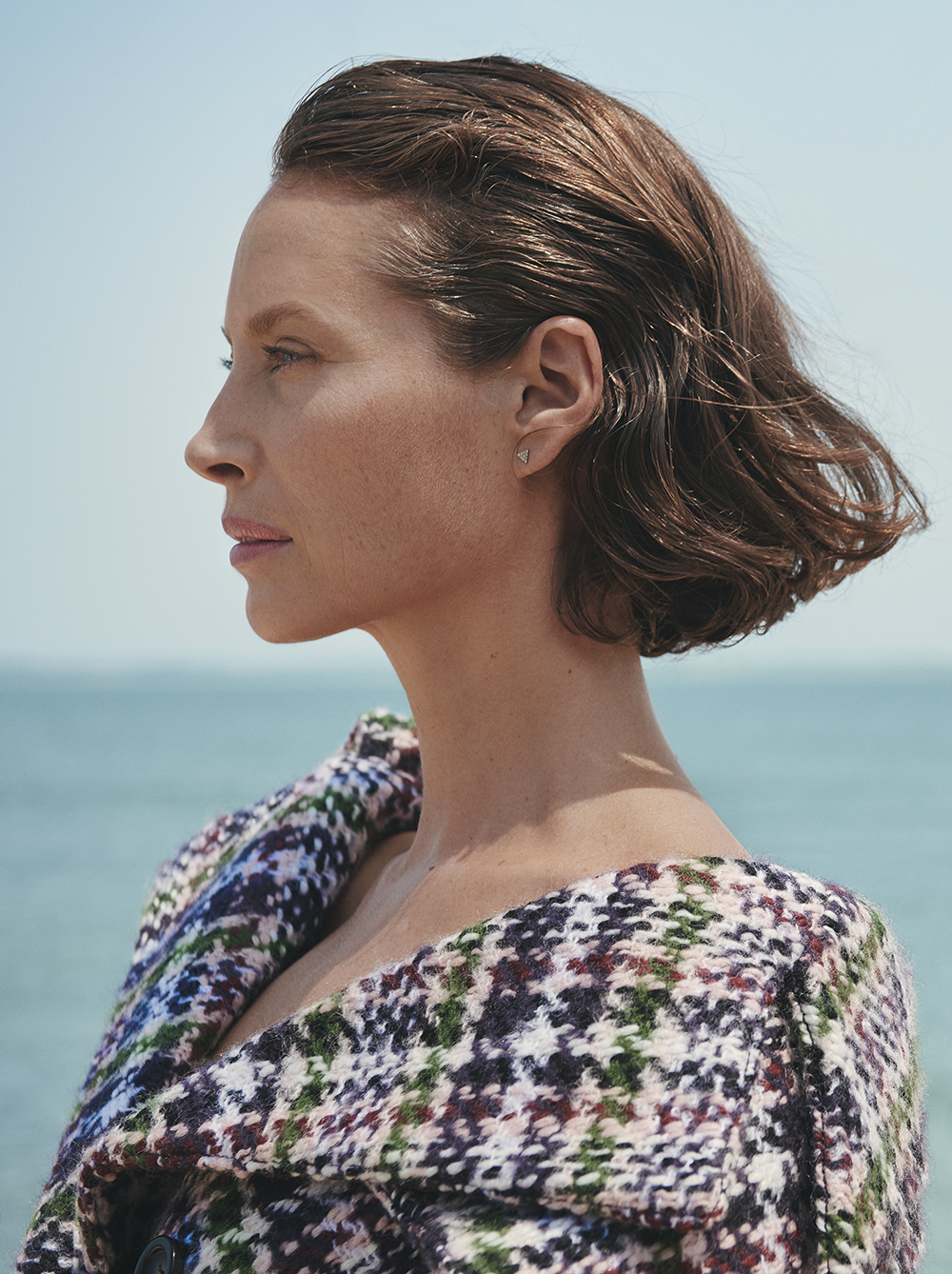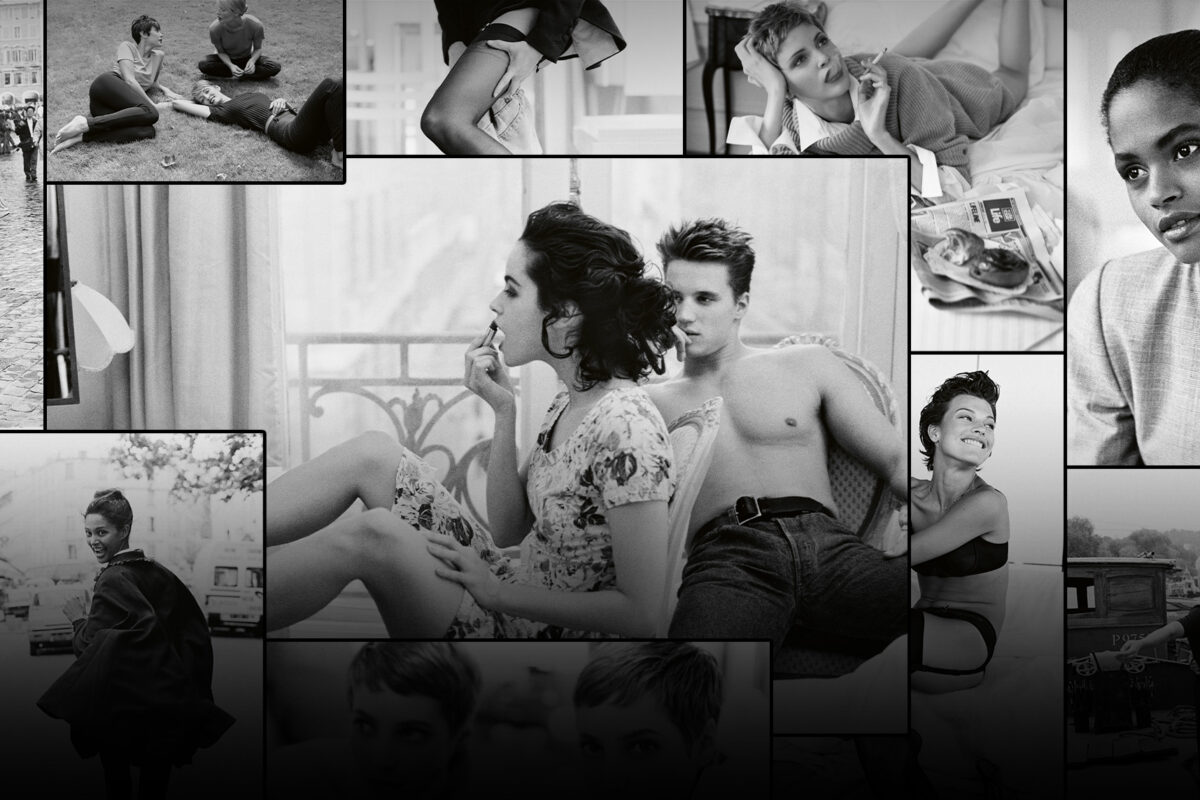After 30 years as one of fashion’s most in-demand models, Christy Turlington Burns could still be dominating the catwalks and campaigns. Instead, it’s this mother of two’s ambition to make childbirth safer that keeps her in the spotlight
Words by JANE LARKWORTHY
Photography by PAMELA HANSON
Creative and Fashion Direction by ALISON EDMOND
Christy Turlington Burns has just completed an important rite of passage: deciding on the right high school for her teenage daughter. “We let her choose,” she explains of her eldest child, Grace, 14. “I said, ‘We will support whatever choice you make.’ We wanted her to go through the process, to experience that feeling. Someone said to me, ‘That’s big parenting stuff…Keep doing it.’”
“Phew,” she laughs, wiping her forehead then waving her finger. “Check!”
We meet at the New York City headquarters of Every Mother Counts, the non-profit organization Turlington Burns founded in 2010 dedicated to making pregnancy and childbirth safer for all mothers the world over. There are a few women milling about in the reception area, wearing name badges and waiting for a happy hour that EMC is hosting for the New York Marathon runners supporting the cause.
When Turlington Burns appears from a conference room, she is wearing a sleeveless Sea shirtdress and K. Jacques sandals, her hair pulled back haphazardly the way most women do on hot and sticky Manhattan summer days. She apologizes for keeping me waiting even though she is not running late (I was early). When she hugs me hello she reminds me that we had met ages ago at the launch of her skincare line, Sundari, which she has since left. Wait a minute. She’s the supermodel. She’s not supposed to remember me. While some of the supermodels of her generation built a reputation on being intimidating, Christy Turlington Burns is anything but.
Her face is one of the most recognized in the world. A runway favorite at Chanel, Yves Saint Laurent and Versace in the ’80s and ’90s, her serene visage was used in several Calvin Klein Eternity fragrance campaigns, more than three decades apart. And who can forget her starring role in George Michael’s “Freedom! ’90” music video alongside her contemporary supes who to this day don’t require surnames—Cindy, Naomi, Linda and Tatjana. Despite gracing more than 1,000 magazine covers for more than three decades, Turlington Burns has a different primary purpose now. “Running an organization and raising a family forces you to prioritize. You can’t do everything at the same time,” she says. “Someone once told me, ‘You have to sequence.’ So, for me, that means family, EMC, and I guess I take the last sliver!”
Since the beginning, the organization has raised more than $21 million, and has expanded its grant portfolio to include Bangladesh, Guatemala, Haiti, India, Tanzania, Uganda and the United States. And while the number of annual deaths related to pregnancy complications has dropped worldwide, according to UNICEF, from 532,000 in 1990 to 303,000 in 2015, the rate of maternal mortality stateside is actually on the rise, as analyzed by the Global Burden of
Disease. Turlington Burns has made it her mission to change that, and to continue to decrease the global number further.
The model turned campaigner came close to losing her own life when she suffered a hemorrhage from complications after giving birth to Grace. Had she not received the proper care at the Birthing Center at Saint Luke’s-Roosevelt (now Mount Sinai West), the experience could have proved fatal. Every Mother Counts was born out of that trauma, with the goal of lowering the maternal mortality rate worldwide by focusing on three key factors: access, education and community engagement.
“We’re thinking about the whole package, but we’re also one of the only organizations that focuses on the mother,” she says. “Mom is not just a vessel, she’s not just a means to an end. We’re trying to focus on postpartum care and how critical the ‘fourth trimester’ is.”
Out in October, Giving Birth in America: California is the fifth installment of the documentary series executive produced by Turlington Burns and filmmaker Clancy McCarty, which will be distributed in partnership with CNN. Set in Watsonville, Central California, the film follows an immigrant farmworker from Mexico who is expecting her third child, as she progresses through pregnancy and childbirth. The ongoing series examines the issues that have contributed to the maternal health crisis in the United States, where, according to the Centers for Disease Control and Prevention, more women die from pregnancy and childbirth than in any other developed country.
“California was a good choice for a lot of reasons, mostly because it’s been kind of an example for other states as to what to do,” explains Turlington Burns. “They have this sort of report card system for hospitals, and they also have Medi-Cal, where, if you’re pregnant, you’re eligible [for care] regardless of your situation. We wanted to do something around postpartum care, and we wanted to do something with the Latina population. We looked at so many locations—Northern California, Southern California—and then, we were like, ‘No. Central Valley.’ ” The grandparents of Cristina Gamboa, an obstetrician interviewed in the film, were Mexican immigrants, and she studied medicine to return to serve a community similar to the one she grew up in. “We just fell in love with the clinic [Salud Para La Gente] because of her,” Turlington Burns says.
Turlington Burns is herself the child of an immigrant: Her mother, Maria Elizabeth, was born in El Salvador and moved to the States at the age of 8. She and Turlington Burns’ father, Dwain, an airline pilot, raised their three girls in Danville, Calif. The middle child, she didn’t grow up wanting to be a model, but an agent spotted her at age 13 in Miami, where her family had relocated for a few years, and she began modeling soon after.
“My sisters were always kind of grumpy when someone took a picture of us,” Turlington Burns remembers with a smile. “But I was always a bit of a ham”
Five years later, she moved to New York to pursue her career. At 25, she put modeling on hold to attend New York University, where she graduated cum laude with a bachelor’s degree in philosophy and comparative religion. In the early aughts, she launched two businesses—Nuala, a yoga-inspired lifestyle clothing and accessories line with Puma, and the aforementioned Sundari skincare company. Around that same time, she met Edward Burns, an actor-filmmaker whose directorial features include Sidewalks of New York. They wed in San Francisco in 2003, while she was pregnant with their first child.
After recovering from her problematic first delivery, Turlington Burns began running distance races in 2011 as a way to raise awareness and funds for the millions of women around the world who live great distances from trained providers or medical facilities, and for whom transportation is extremely limited and cost prohibitive. In November, she will return to her native NorCal to debut the film and to participate in the Golden Gate Half Marathon—her 12th half-marathon to date.
“Running is, in so many ways, like childbirth,” she says. “Many women can’t easily get to their doctors who are often miles and miles away.”
Turlington Burns has learned from firsthand experience that the postpartum period is a crucial time for not only mother-child bonding, but also as a time for mothers to set their own personal goals.
“I breastfed for a long time with both kids [her son, Finn, is 12], so I had to kind of sit still for a while, and so many of my creative juices were flowing, and that was when I started really plotting,” she remembers. “As a society, we don’t think of that time as a period of nurturing ideas, but for a lot of women in business today, especially those who are in this mommy space, their ideas came from having children. And I think those are the kinds of ways that businesses are being created more and more.”
Her own organization, approaching its 10th anniversary, is what Turlington Burns is focused on nurturing, much like a mindful parent.
“We’re constantly asking ourselves how we could do better,” she says. “We’re bringing voices from the decision-making side, the policy-making side, the providers and the patients, and putting them all on an equal platform where there can be a dialogue. I’m just trying to make sure that, as a founder, I can lead us in the right direction and bring the right people in at the right time.”
When it comes to modeling, she certainly seems to have figured it out. She believes her annual tally of work falls somewhere between 15 and 20 days, with the inclination to say “yes” often hinging on two fundamental questions: Can I work with a friend? (Case in point, this story was shot by photographer Pamela Hanson, whom Turlington Burns describes as a “family member.”) And, can it benefit my cause? Take H&M, who tapped Turlington Burns to be the model for its 2018 Conscious Exclusive collection, and as part of the collaboration, donated to Every Mother Counts.
“Almost every company that I work with, whether it’s a longtime relationship like Calvin Klein or Maybelline, or even the newer ones like H&M, they know that I’m going to want EMC to be a part of it. I [also] think brands are looking for people who have initiatives that their customers would want to learn more about,” she says. “In some instances, it’s a really natural fit. In others, it’s forced. And when it feels forced is when I don’t do it. I feel lucky. I’m turning 50, and I can still pick and choose.”
Not that her 20-something self would have foreseen entering her fifth decade as the face of fashion and beauty brands.
“I used to think, ‘I will never be Lauren Hutton.’ And I’m not her, of course, but I now recognize there’s a value in [all kinds of age diversity], and I also think it’s good for people to see women who are at different ages in their lives who aren’t manipulating themselves.”
Going under the knife remains a hard no. “You know how we look back at different periods and observe what was considered beautiful?” she says, cocking her head. “We look at the [ancient] Egyptians and think, ‘Wow. I can see how the long neck was considered a thing of beauty.’ But looking back at this time? Everyone’s going to say, ‘What the hell were these people thinking?’ I like a Georgia O’Keeffe way of aging.”

This story originally appeared in the October 2018 issue of C magazine.

